Swanscombe, Kent. Sat 6 Jun 2015
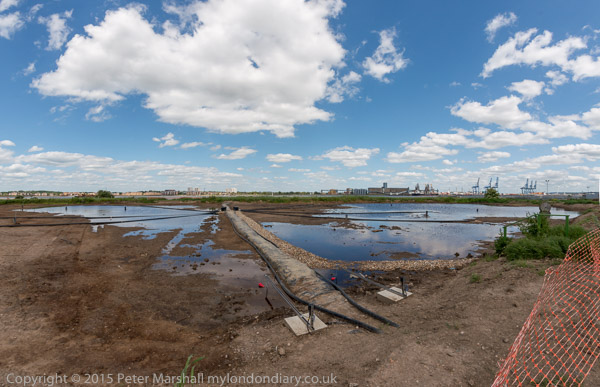
I first visited Swanscombe back in 1985, when I was photographing along the south bank of the River Thames and Lower Thameside. Until the 1840s this area of North Kent had been relatively remove and rural, with riverside marshes largely untouched and valuable agricultural land on the higher areas growing food for the capital.
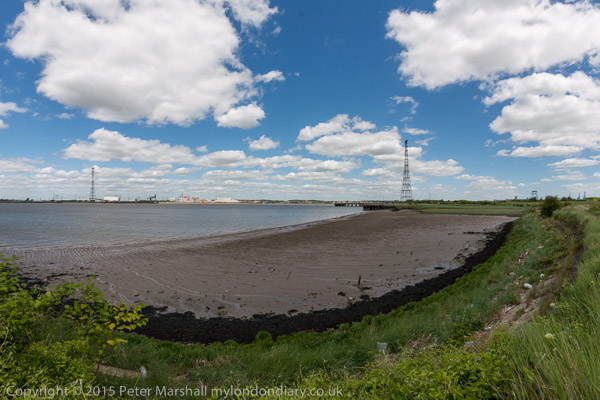
Portland Cement was patented by by Joseph Aspdin in 1824 and the later developed by his sone William, but the modern version of it was developed at Swanscombe by Isaac Charles Johnson, then manager of John Bazeley White’s cement plant. Johnson soon after left J B Whites to set up his own cement plants, including those nearby at Geenhithe and Cliffe, and Frindsbury on the Medway. In 1911 C Johnson & Co became a part of the Blue Circle Group.
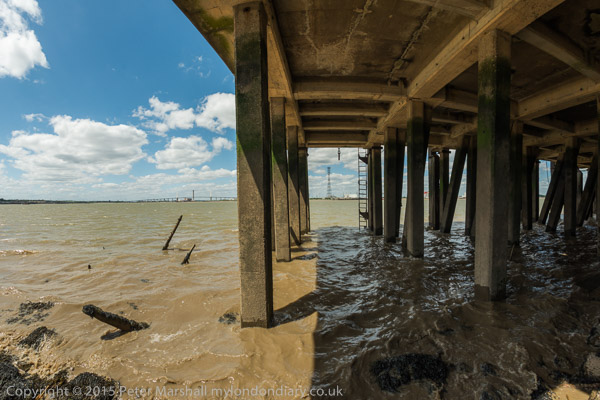
The building of London’s sewers led both to a large demand for cement and also led the Metropolitan Board of Works to provide a specification for their needs which became the standard for Portland Cement. Portland Cement is the cement used in almost all concrete, mortar, stucco and grouting.
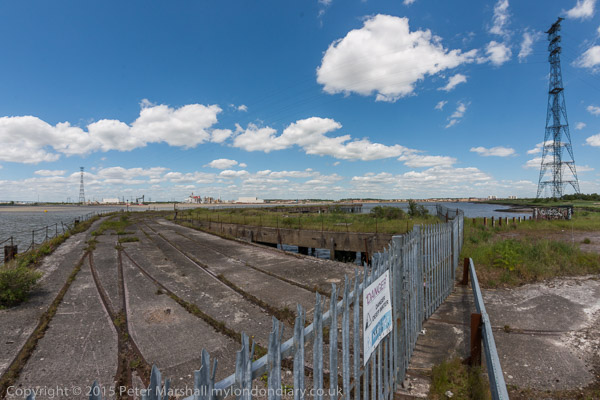
From around 1900 virtually all cement has been made in large rotary kilns, with flames heating limestone or chalk with clay-containing minerals at around 1500-1600 degrees Celsius. Water and carbon dioxide are driven off as the minerals combine to give silicates (mainly (tricalcium silicate, dicalcium silicate, tricalcium aluminate and tetracalcium aluminoferrite). Around 10% of world CO2 production which fuels climate change is due to cement manufacture, and smaller amounts of other polluting materials are also released in the process – hence the high chimneys of cement works. The small lumps of ‘cement clinker’ that emerge at the lower end of the kiln are then ground to a fine powder, often with added gypsum (calcium sulphate) or limestone to give cement.
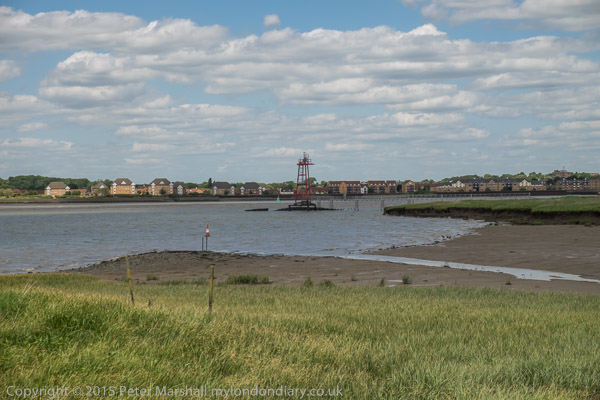
Cement can cause burns and it readily absorbs water, hardening to form solid hydrated material and firmly embedding the sand or aggregate it is mixed with for most uses. Over many thousands of years the River Thames in this area had cut its course up to the chalk of the North Downs, and since the 1840s much of that chalk has been quarried, leaving deep pits with often fairly narrow strips left for roads through the area and housing. One of those deep pits now holds the Bluewater shopping centre at Greenhithe and others are filled with various industrial properties or housing. The industry over around 150 years completely transformed the landscape. But by the time I first came to photograph it, this post-industrial landscape was rapidly being reclaimed by nature.
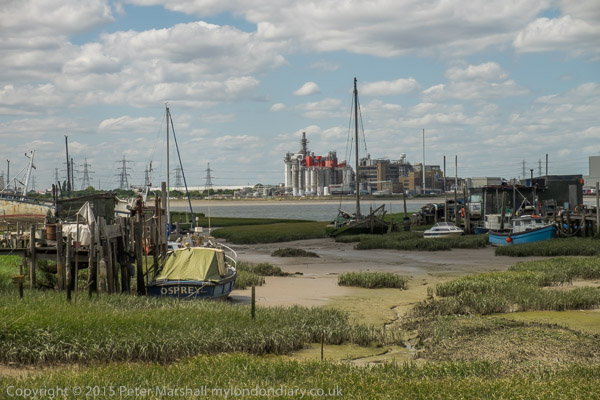
Down the centre of the Swanscombe peninsula is the footpath, Pilgrims Road, leading down towards where a ferry once brought pilgrims on their way to Canterbury from a ferry across the River Thames from close by St Clement’s Church, still there beside the detergent works at South Stifford. Later clay was brought across the river from Essex to wharves for making cement, as well as coal, probably coming by coaster from the north-east to fuel the kilns. Ropeways or conveyor belts will have linked the wharves to the cement plant.
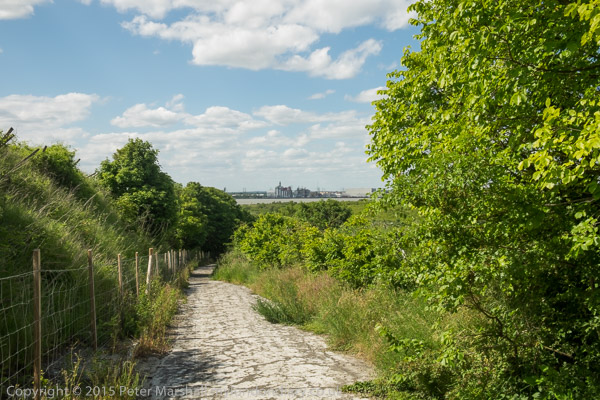
In 2012 I heard of the plans to transform part at least of the area yet again, into the Paramount London theme park, a leisure attraction along the lines of Thorpe Park, which would destroy the area as I knew it. Although I decided to come and photograph the area again before that happened it took me three years to return and do it, cycling around the area on a Brompton, (though occasionally I had to leave it a explore on foot.) Five years on, the plans are still plans and I hope to go back again next month.

With a few exceptions, the pictures here are wide-angle panoramics, with a horizontal angle of view of around 145 degrees and a vertical angle of view of roughly 90 degrees which results in a ‘normal’ aspect ratio of 1.5 : 1 – I usually took these intending to crop to a 1.9:1 ration but have left them uncropped. A few are taken with more normal wide-angle lenses.
On My London Diary you can see more of these pictures, and also read more about the area and my day there in 2015. The images display a little larger on that site.
All photographs on this and my other sites, unless otherwise stated, are taken by and copyright of Peter Marshall, and are available for reproduction or can be bought as prints.